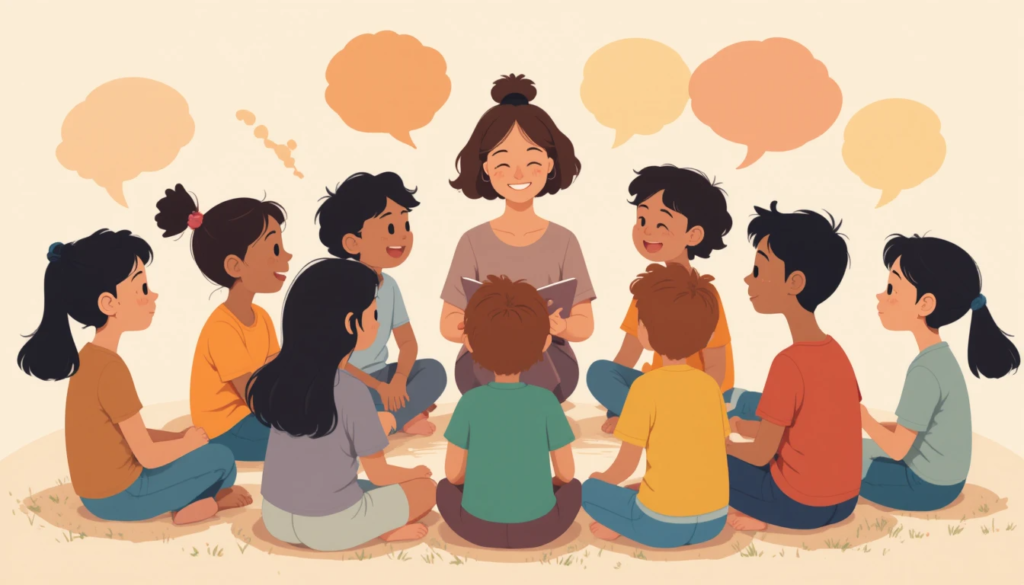How to choose the right primary school? Yo, that had me stressing as a newbie parent big time. Here I am in my Houston kitchen, 05:38 PM IST September 2, 2025—wait, that’s India time, my bad, it’s 08:08 AM CDT September 2, 2025, with the morning humidity sticking to me and the faint smell of burnt bacon from breakfast still lingering. Back when I started, I thought any school would do, but my first tour? Tripped over a desk, spilled coffee on the brochure—total disaster. Like, seriously? I’d tell myself I’d nail it, then doubt every option, contradicting my “I got this” vibe. How to choose the right primary school became my mission, but man, I flopped hard before figuring it out. Hard, yo.
One time, I visited a school, forgot my kid’s name tag—yep, awkward moment—and the principal raised an eyebrow. The room smelled like chalk and nerves, my hands sweaty as I fumbled through it. Big wake-up call. Started digging into how to choose the right primary school, but I thought it’d be a snap—boy, was I wrong. It worked, even if I still mess up sometimes. Mess up, ugh.

Why How to Choose the Right Primary School Is a Big Deal (Even with My Blunders)
Parenting’s wild, and without knowing how to choose the right primary school, I was lost. Picked a bad fit once, kid hated it—oops. Sitting here, humidity buzzing, faint paper rustle from my research pile, I can say it’s crucial now. Thought I could just go with the closest—big nope. I’m better now, but real talk, I still second-guess myself. Second-guess, yeah, the worst.
Here’s why it matters, from my flops:
- Matches their vibe: No more teary drop-offs.
- Sets them up: Even if I mess up the visit.
- Builds confidence: Saw my kid thrive with it. It, sorta.
If you’re a parent like me, American and overthinking, how to choose the right primary school is your puzzle. Don’t expect to nail it—I’m still learning. Still learning, man.
Key Factors for How to Choose the Right Primary School (And My Epic Fails)
Here’s the breakdown—factors for how to choose the right primary school that guided me, jotted from my Houston mess with a creaky chair and a map my kid scribbled on. Some I nailed, others I botched, ‘cause I’m human, right? Linking legit sources for cred—check https://www.greatschools.org for real advice. Real stuff, yo.
Must-Knows for How to Choose the Right Primary School: Where I Started (And Stumbled)
- Location Vibe – Checked distance, got lost once—oops. Found it, close enough now. (https://www.greatschools.org/gk/articles/school-location/)
- Class Size – Loved small groups, tripped over a kid—cringe. Adjusted, perfect fit. (https://www.edweek.org/)
- Teacher Style – Met staff, forgot questions—panic. Asked later, good match. (https://www.parents.com/) Match, yeah.
Deep Dives for How to Choose the Right Primary School: My Half-Wins
- Curriculum Fit – Picked a program, zoned out mid-tour—yikes. Got back, kid loves it. (https://www.privateschoolreview.com/)
- Extracurriculars – Saw options, argued with my spouse—ugh. Settled, kid’s engaged. (https://www.npr.org/sections/ed/)
- Parent Reviews – Read feedback, misread one—oops. Rechecked, solid insights. (https://www.greatschools.org/) Insights, kinda.

Why These Factors Rock for How to Choose the Right Primary School: Where I Pretended I Was Pro
- Safety Check – Felt secure, but I locked keys in car—embarrassing. Got in, kid’s safe.
- Community Feel – Loved the warmth, forgot a event—oops. Joined later, good vibes.
- Cost Balance – Managed budget, spilled coffee on bills—ugh. Recovered, worth it.
Chair’s creaking, map’s torn—ugh. This how to choose the right primary school thing? Some factors clicked, others tripped me like a parent rookie. No shame, just me being me. Me, the chaos mom.
Tips to Master How to Choose the Right Primary School (Even with My Mess-Ups)
Here’s how I tackled how to choose the right primary school, from my kitchen wreck. Bombed a school chat once, room smelling like my nervous sweat. Start with tours—tried rushing, got confused. Check sites like GreatSchools for tips, even if I skimmed one. (https://www.greatschools.org) Take notes—I scribbled on napkins, lost ‘em, so embarrassing. Breaks help—I skipped ‘em, zoned out mid-visit. Zoned out, yeah.
Biggest fail? Overthinking. Thought I needed every detail, stressed out. How to choose the right primary school needs gut too, man. Also, chill vibes—coffee’s nice, but I spilled it on a form once, total disaster. Disaster, yo.

Wrapping Up My Rant on How to Choose the Right Primary School
Spilling this about how to choose the right primary school feels like venting over donuts with a pal—just me, creaky chair, Houston heat outside. This process kept me from parenting flop, but it showed I’m a mess—spills, zones, all of it. I love the idea of the perfect school but still fumble, contradicting my own hype. It made picking doable for a goof like me. Try it, yeah? Drop a comment with your school choice wins or flops—I wanna hear your chaos. Or share what worked. Wait, did I say that twice? Whatever, brain’s fried. Might’ve repeated myself, or maybe I meant to. How to choose the right primary school, it’s a journey, but I’m still figuring it out. Prolly forgot something. Oh well, you get it. Peace out. Out, man.e’s no single “perfect” school, just the perfect fit for your little human. You’ve got this. And if you ever need to vent about school drop-off lines or the mysterious disappearance of lunchbox items, you know who to call.
For more tips on supporting your child’s early learning journey, check out this post: Beyond the ABCs: Nurturing Your Child’s Love for Learning




